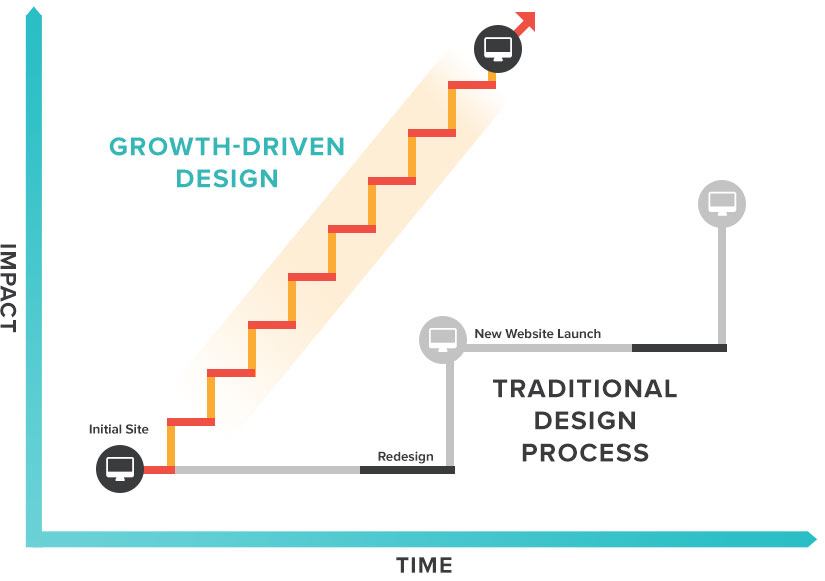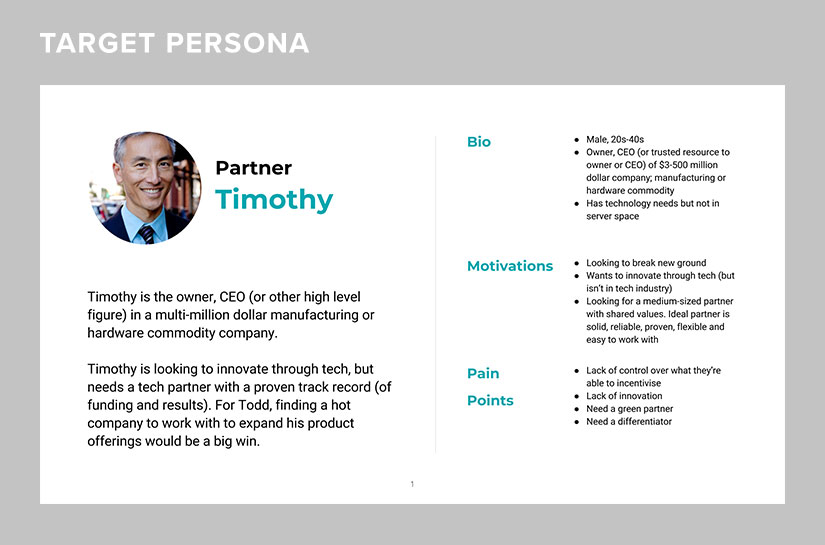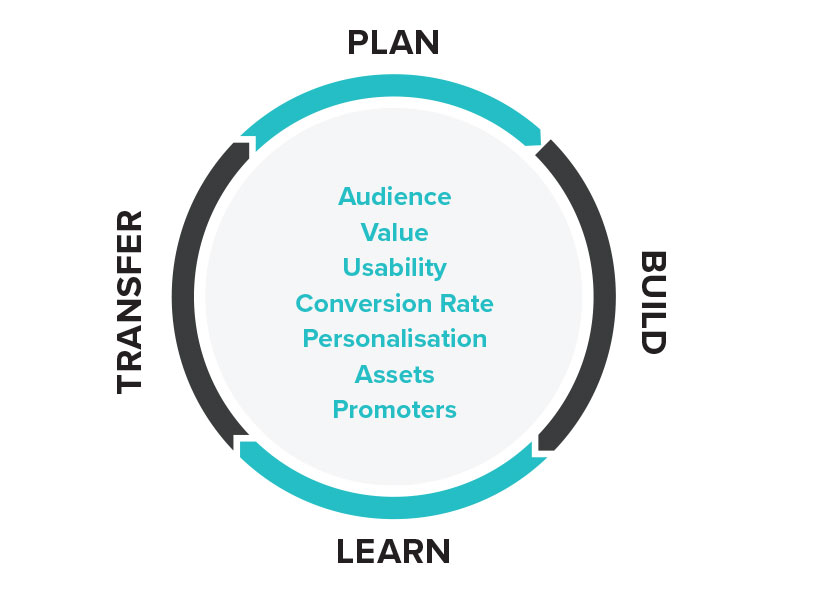How Growth-Driven Design is Changing Website Strategy
January 22, 2018Your website can be your best marketing asset and salesperson. Shouldn’t it be in peak condition?
Launching a company website, being reasonably content with it for several years, then undergoing a full redesign has been common practice since the dawn of websites. But the reality is that if you haven’t regularly analyzed and adapted your current site since it launched, your #1 asset has its feet up on the desk, eating cheezies and ignoring calls.
With a growth-driven web design approach, that will never happen to your business.
Growth-driven design is a hot term in the marketing industry right now, and it does exactly what the name implies: drives serious growth in conversions and in revenue. It helps businesses quickly acquire critical user data, and start seeing strong results.
Intrigued? Let’s dive into how growth-driven design works, and what it can do for you.
What is growth-driven design?
Growth-driven design is a smart approach to web design and redesign that reduces — and even removes — pain points for both the business and the agency. It delivers maximum website performance results for your business through continuous post-launch user learning and improvements.
Basically, it ensures your website is the powerful marketing and sales asset it should be.

Via Hubspot Growth-Driven Design
Through a longer and more involved engagement with an a growth-driven design agency, you get a website that’s continuously evolving and improving. Ongoing user learning through data analysis, plus integrated marketing and sales efforts, result in continual tweaks and updates that improve traffic and conversions.
The alternative is what you may have already experienced: undergoing a time- and resource-draining website launch, and then going through it all over again just a few years later when your site no longer cuts it.
Growth-driven design also addresses the biggest concerns for companies outsourcing web design projects, such as late launches or going over budget, and keeps your website continuously adapting to perform at its best.
Sounds awesome, right?
This methodology isn’t exactly new. Agencies like BSTRO have already been offering long-term engagements that include post-launch data analysis and marketing support. But now that there’s a name for the methodology, smart businesses are really taking notice.
Get our designers’ perspective on why There is Never a Finished Website
Isn’t a longer agency engagement more expensive?
There is of course additional overhead for retaining a web design and marketing agency to do ongoing improvement after launching a website, but it removes the need for repeated — and costly — complete redesigns every few years.
The continual attention to user data analysis should drive more conversions and sales (profit!) than the website could ever hope to if left alone.
Growth-driven design also encourages shared user learning between the website team and your marketing and sales teams, which means everyone is working off the latest insights about what your target audience wants and needs.
How is growth-driven design different from traditional web design?
Let’s break down the way most businesses partner with a web design agency: a one-off contract to either build a new website, or redesign an existing one.
With this traditional approach, your company would hire an agency or contractor. Once the site is launched, that engagement ends. Your site sits stagnant in cyberspace for a few years, perhaps occasionally getting a new page added, or products and services changed. It then undergoes a major rebuild and design to catch up with business growth and changes, trends, and new technology.
Repeat ad-infinitum.

Via Hubspot Growth-Driven Design
The key issue is that in those in-between years, most businesses aren’t continuously analyzing their website data to see if the assumptions made during design were correct, how the site is performing, and what should be changed in order to give visitors what they need — and to reach your strategic goals.
With your website as your sales and marketing lead, we’re back to the cheezie-eating scenario.
Unsure if your site is due for a redesign? Find out with our free Website Audit Checklist
This sounds time-consuming…
Ongoing analysis, shared user learning, and continuous improvements. It sounds like a lot of work because it is, but don’t stress! This is what you’ve hired the growth-driven design agency to do.
How companies work with the agency is completely up to them. You can have weekly website data reporting meetings, monthly, or quarterly. Or you can even just ask the website team to apply improvements per their judgment based on the data, and just alert you to key learnings that need urgent attention.
What are the stages in growth-driven design?
As you now know, in growth-driven design businesses form partnerships with agencies to quickly launch an improved website, and retain a monthly engagement to collect data and continuously update the site for peak performance.
While the approach can be different depending on many variables — such as budget, timeline, and business size — there are three common stages to what your engagement with the agency would look like.

Stage 1: Strategy
Strategy is the critical first step that must never be skipped. During the strategy stage, a solid foundation is laid out on which all future efforts will be built. It gives everyone involved a focus for project goals.
This is when the business and agency work together to form an empathetic understanding of the website’s users: how will this site fit into their lives? What do they need to be able to do on the site? Who even are they?
Some items you might expect to work through in the strategy stage:
- Goal setting
- Building user/target personas
- Creating a user journey map
- User research
- Brainstorming a wishlist of website components
- Hypotheses to test

Stage 2: Launching initial site
Here lies the disparity between growth-driven design and traditional design processes. With traditional design, this is where you would build and launch the website, and other than bug fixes, this would also be the last step.
With growth-driven design, things are a little different. No cause for alarm! There’s a logical rhyme and reason to it.
In this second stage, an initial or “launch pad” website is developed, designed, and launched. The goal is to launch quickly and get the first version of your new website into your users’ hands. Then the valuable data can start being collected and analyzed, and improvements begin.
Items you might expect to work through in the initial launch stage:
- Prioritize the wishlist and identify key features with the most business impact
- Typical web development and design process actions (wireframes, comps, content migration, etc.)
- Quality assurance testing
- Launch
Immediately after the launch, it’s possible to identify quick-wins and make the first improvements to the site. Some things you might do during the period while ample user data is being gathered:
- Add any high-impact wishlist items that didn’t make the launch site
- Make rapid updates based on initial user feedback
- Monitor organic traffic, heatmaps, bounce rate, etc.
- Monitor anything that was in debate during the initial buildout (ex. buttons, styles, navigation), and perform tests to see how they’re performing
Stage 3: Continuous improvement
This is where the fun begins (at least for data nerds like myself)! At this point, enough user learning has been collected to make informed decisions about bigger improvements.
For example, you may have put a video in the hero area of the site because it’s industry best practice. But you might learn through heatmap data or slide-up surveys that users aren’t watching it, or even find it distracting. Good thing you won’t be leaving that video in their way for a few years, right?

Actions that are happening, or not happening, on the site will help everyone quickly make the right adjustments to always give your users their ideal experience. And because of all that juicy user data, you can make sure you’re allocating time and budget wisely — not on things your audience doesn’t care about or use.
Items you might expect to accomplish in the continuous improvement stage:
- Ongoing user data collection and analysis
- Prioritizing and adding further wishlist components
- Performance reporting
- User learning sharing between sales, marketing, and website teams
- Digital integration of sales and marketing efforts
The bottom line is that business websites are an investment. Like all of your assets, they need to be monitored and nurtured to perform their best. Continuously tweaking and adjusting based on learnings to stay on top of business growth, tech, trends, and user demands just makes sense.
If you’re excited and want to know all about which design and marketing benefits your company could take advantage of in a growth-driven design engagement, browse through our services.
